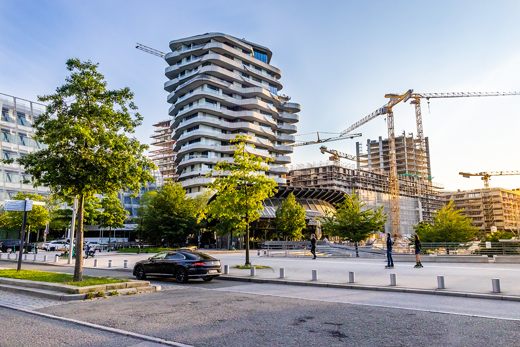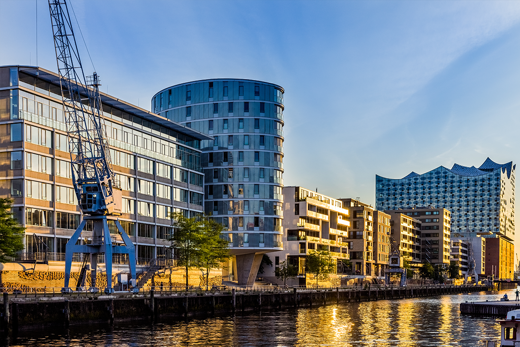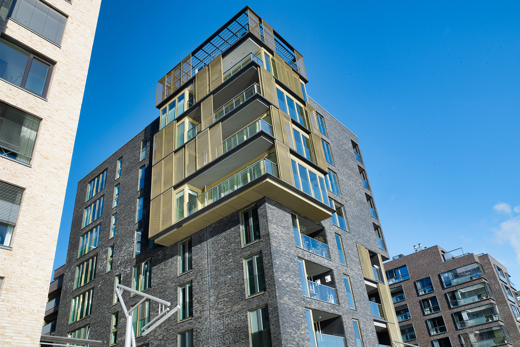
Betting on energy efficient buildings
We spend 90% of our time in buildings, which underscores the key role they play in our lives. These buildings and their construction also account for over one-third of final global energy consumption and close to 40% of total direct and indirect CO2 emissions. That means that decarbonizing buildings and enhancing their energy efficiency is essential to curtail a rise in emissions and meet the Paris Agreement.
The time to act is now
With roughly two-thirds of the current building stock projected to still be in use in 2050 (Architecture2030), increasing the renovation rate of existing buildings is a priority. At the same time, standards for new buildings – and their construction – must also increase. The foreseen growth of the buildings and construction sector during this period makes it all the more urgent to act (UNEP).
Unlocking the potential of buildings
Buildings as the cornerstone to decarbonization

Optimising the building stock’s energy demand
The global building stock accounts for a significant portion of the world’s final energy consumption. 80% of the energy used in buildings can be attributed to heating and cooling, which is still predominantly fossil-fuel based. By simply optimising heating, ventilation and air conditioning systems, we can secure an average energy saving of 30% with a payback time of just two to four years. District energy networks have a key role to play in this regard by integrating a higher share of renewable energy capacity and providing storage solutions to address peak hour demand.

Job creation potential
The building sector not only offers us a highly cost-effective platform to significantly reduce GHG emissions, but it can also act as an important job creator. The IEA estimates that between 9 and 30 jobs could be created for every million dollars invested in energy efficiency measures in the building sector. That’s the highest potential across the whole energy sector. And, these are locally created jobs that would serve to spur local communities and broader economic activity.

Addressing energy poverty
The rise of energy poverty across the world is a concerning phenomenon, with an estimated figure of 30 million people in Europe (CEB), for example, struggling to heat their homes.
Streamlining the deployment of smart technologies and other energy efficient products and services will lead to a more optimal use of energy that could see households save a large amount in their final bill. For example, in Europe, as much as EUR 67bn could be saved on energy bills annually.

Healthier society
More energy efficient buildings also means healthier local communities and towns. Improved comfort and indoor air quality leads to less associated illnesses and medical costs. This raises the overall productivity and comfort level of society with less people requiring medical leaves of absence.
Enabling energy efficiency solutions in buildings
The solutions are ready
We have proven technologies available to increase the efficiency of buildings and make the systems within them more efficient. Often, however, even the low-hanging fruit is not captured. That needs to change, and rapidly so, to capture all the potential.
One way to do that is through deep staged renovations which offer a cost-effective approach to integrating energy efficiency enhancing solutions into renovation plans. Facilitating staged renovations allows for a more flexible approach with the end-goal: decarbonization of the building, still in clear sight.
Digitalization
We need to use our energy smarter, and digitalization is one of the primary drivers to optimize energy production, energy consumption and the integration side of energy. Building automation and control systems can integrate and optimize demand response, consumption prediction, energy storage and management of distributed energy of renewables, making them critical energy infrastructure for the area around them.
It also empowers building users to better understand their environment – proactively managing their energy usage and maintaining a healthy, comfortable and productive living environment, adjusted to their liking.
Energy System Integration
A building is not just a building. It is critical infrastructure for the whole energy system, and to optimize efficiencies across that system we need integration. That means integrating heating and cooling sources at neighborhood level and encouraging, and mandating where appropriate, network-based heating and cooling systems that integrate renewable energy, and waste heat from datacenters, supermarkets and wastewater treatment plants, for example.
By combining energy efficiency with sector integration, we ensure an optimization of resources.
Policy framework to drive energy efficient buildings
We know that large investments will be needed to drive the much-needed renovation of the global building stock. A transparent and stable legislative framework has a key role to play in enabling the deployment of cost-effective solutions such as smart technologies by providing investors with firm footing to plan from.

Example in Europe: Fit for 55 and buildings
In Europe, the Fit For 55 package will drive the EU’s transition towards a carbon neutral economy by 2050. Buildings are crucial to this, as they presently account for 40% of the EU’s energy consumption and 36% of its GHG emissions.
Countries have the financial capability to drive the decarbonisation of the building stock, keeping a focused mind towards mid to long-term planning is key. We strongly believe that the Energy Efficiency First approach which underpins recast of key pieces of legislation, such as the Energy Efficiency Directive, Renewable Energy Directive (RED 2) & the Energy Performance of Buildings Directive (EPBD), will be instrumental to accelerating action on the low-hanging fruits for decarbonisation – namely, enhanced renewable-based electrification, energy sector integration, and the deployment of smart solutions in buildings.
Delivering on the bloc’s ambitions is key, and the Fit For 55 has the formula to do so in the most cost-effective manner.
Explore related articles
Asia Pacific Edition

Deep Dive into Asia Pacific region
Discover how we Decarbonize Buildings in Asia Pacific with real case stories featured!









